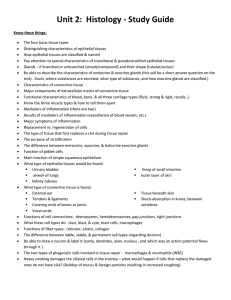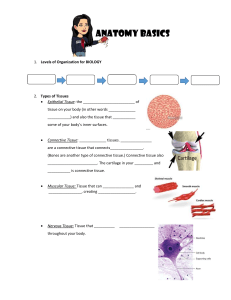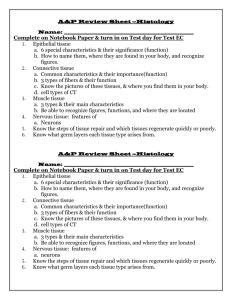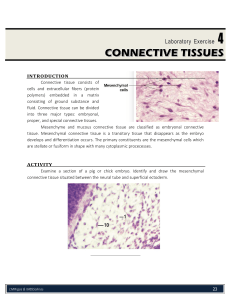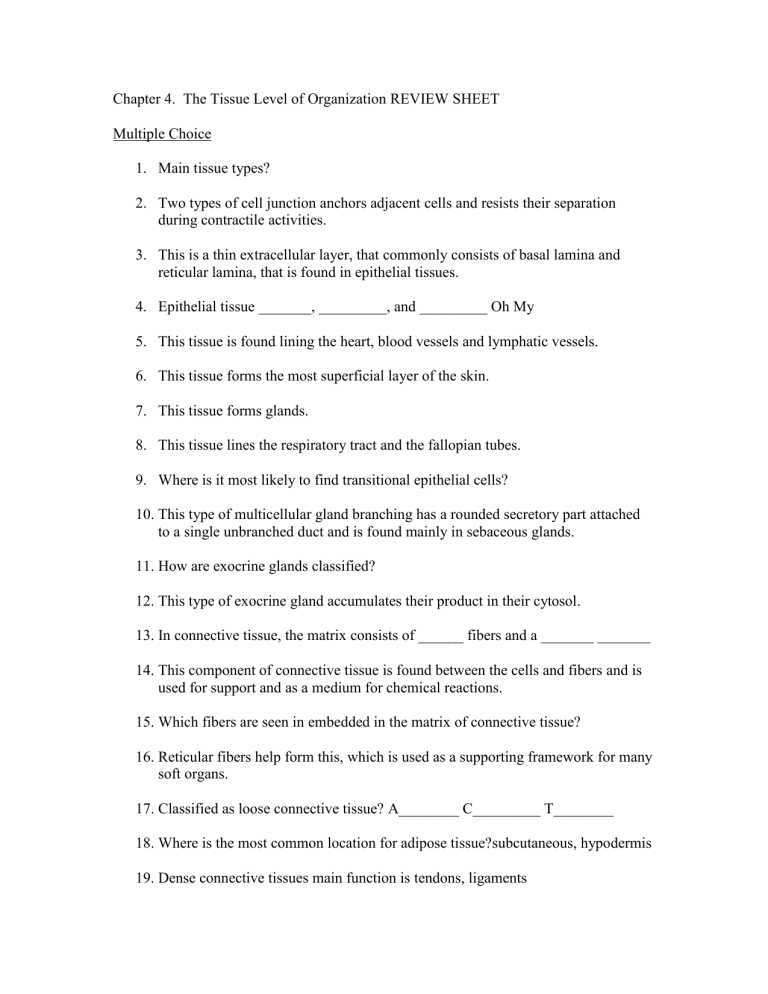
Chapter 4. The Tissue Level of Organization REVIEW SHEET Multiple Choice 1. Main tissue types? 2. Two types of cell junction anchors adjacent cells and resists their separation during contractile activities. 3. This is a thin extracellular layer, that commonly consists of basal lamina and reticular lamina, that is found in epithelial tissues. 4. Epithelial tissue _______, _________, and _________ Oh My 5. This tissue is found lining the heart, blood vessels and lymphatic vessels. 6. This tissue forms the most superficial layer of the skin. 7. This tissue forms glands. 8. This tissue lines the respiratory tract and the fallopian tubes. 9. Where is it most likely to find transitional epithelial cells? 10. This type of multicellular gland branching has a rounded secretory part attached to a single unbranched duct and is found mainly in sebaceous glands. 11. How are exocrine glands classified? 12. This type of exocrine gland accumulates their product in their cytosol. 13. In connective tissue, the matrix consists of ______ fibers and a _______ _______ 14. This component of connective tissue is found between the cells and fibers and is used for support and as a medium for chemical reactions. 15. Which fibers are seen in embedded in the matrix of connective tissue? 16. Reticular fibers help form this, which is used as a supporting framework for many soft organs. 17. Classified as loose connective tissue? A________ C_________ T________ 18. Where is the most common location for adipose tissue?subcutaneous, hypodermis 19. Dense connective tissues main function is tendons, ligaments 20. This type of connective tissue is used mainly for support within the skeletal system. 21. What is the basic unit of compact bone tissue?osteon 22. Spongy bone lacks 23. The matrix in blood tissue is 24. This type of membrane lines a body cavity that does NOT open directly to the outside. Serous, Mucous, Cera 25. These are immature, undifferentiated cells that can divide to replace lost or damaged cells. 26. Tissues responsible for pumping blood? 27. Tissue has more than one nucleus and is voluntary? 28. Cells (Tissues) are excitable and, therefore, able to carry electrical impulses? 29. Tissue Identification (Online) and Anatomy and Physiology of Connective Tissue

